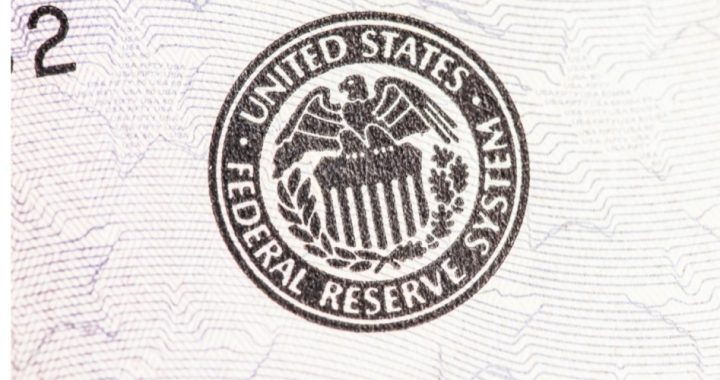
Podcast: Play in new window | Download ()
Subscribe: Android | RSS | More
Federal Reserve Chairman Jerome Powell said very little following the meeting of the Federal Open Market Committee (FOMC) on Wednesday. But what he did say revealed the vast chasm between the views of advocates of a free market and those supporting statist interventionism. After announcing, “We’re comfortable with our current policy stance [Fed Funds rates between 1.5 and 1.75 percent],” he said he’s unhappy that inflation isn’t running higher:
We’re not satisfied with inflation running below 2%, particularly at a time such as now where we’re a long way into an [economic] expansion and a long way into a period of very low unemployment when in theory inflation should be moving up…. [Emphasis added.]
While low and stable inflation is certainly a good thing, inflation that runs persistently below our objective [of 2 percent] can lead longer-term inflation expectations to drift down, pulling actual inflation even lower.
In turn, interest rates would be lower as well.… As a result we [the FOMC] would have less room to reduce interest rates to support the economy in a future downturn.
To make sense of this hash, one has to remember first that inflation and price increases are not the same thing. Inflation is the deliberate intentional creation of new money and/or credit by the Federal Reserve. As that new money flows into the economy (usually through government spending of the new money), prices rise, reflecting the reduced value of each currency unit. Those prices increases are the natural and predictable result of the decreased purchasing power of the currency.
Although Powell is not an economist, he has bought into the philosophy that a $22 trillion economy like that of the United States can actually be beneficially managed. The Fed has been given two mandates: maximum employment and stable prices.
That worldview can be summarized: Inflation is good; deflation (lower prices) is bad. That, according to Keynesian economic theory, is because when prices are rising in the marketplace, consumers are more inclined to spend money now ahead of higher prices later. Thus, goes the theory, the economy is stimulated, jobs are created, and unemployment drops. If the Fed can characterize two-percent inflation as “stable,” it has accomplished its two objectives.
The other world view, referred to as “common sense” economic theory or “classical” economic theory, says that inflation is bad and deflation (lower prices caused by the competitive economy, reflecting more efficient ways to produce goods and services) is good. Consumers are thus persuaded to wait before making a purchase, expecting even lower prices in the future. In the meantime currency not spent immediately provides the capital needed in a private capitalist free market economy.
In other words Keynes — and his adherents on the board of the FOMC — believe that the economy can be guided by smart people in high places holding advanced degrees.
As a result those smart people did dumb things. The FOMC raised interest rates nine times between 2015 and 2018, hoping to “nip inflation in the bud” as the economy began to recover. The board fully expected that a stronger economy would push wages higher (a marker of inflation). When the mistake was discovered — those interest rate hikes started to slow the economy — the FOMC reversed course and reduced interest rates.
As the New York Times candidly noted, “Officials [on the FOMC] made these moves, all of which Mr. Powell voted for, because they expected low unemployment … to spur higher inflation [reflected in higher wages]. It hasn’t, even after they cut rates three times in 2019.”
And the reason it hasn’t is because the Fed hasn’t been increasing the money supply. Its balance sheet peaked at $4.3 trillion in 2014 and stayed there. Since price increases are directly related to the money supply, prices started declining as the economy continued to find better, faster, and cheaper ways (see Amazon) to make and deliver goods and services.
The declines were exacerbated when the Fed began to offload some of its balance sheet, letting its bond holdings mature without reinvesting them.
Prices continued to decline, falling below the Fed’s theoretical trigger level of two percent. According to Keynesian economic theory this is bad.
All of which explains why Powell is unhappy.
And he’s doing something about it: He has reversed course. He is now reflating the money supply by $60 billion a month. The Fed’s balance sheet (a reflection of the economy’s money supply) has jumped by almost $400 billion since September. Of course Powell doesn’t call it QE — quantitative easing — but refers to it as temporary funding of repurchase agreements in the secondary bond market as government borrowing threatened (and continues to threaten) that market’s ability to absorb the new bonds the U.S. Treasury is selling in order to pay the government’s bills.
What all this amounts to is this: For the time being interest rates will stay the same for the foreseeable future. No official change is expected until after the election (thus reducing the risk of Powell getting flamed by Trump’s Twitter feed). But the pressure on prices will inevitably increase as the Fed continues to increase the money supply, giving the excuse Powell needs to intervene by raising interest rates later.
Photo: 200mm / iStock / Getty Images Plus
An Ivy League graduate and former investment advisor, Bob is a regular contributor to The New American, primarily on economics and politics. He can be reached at [email protected].



